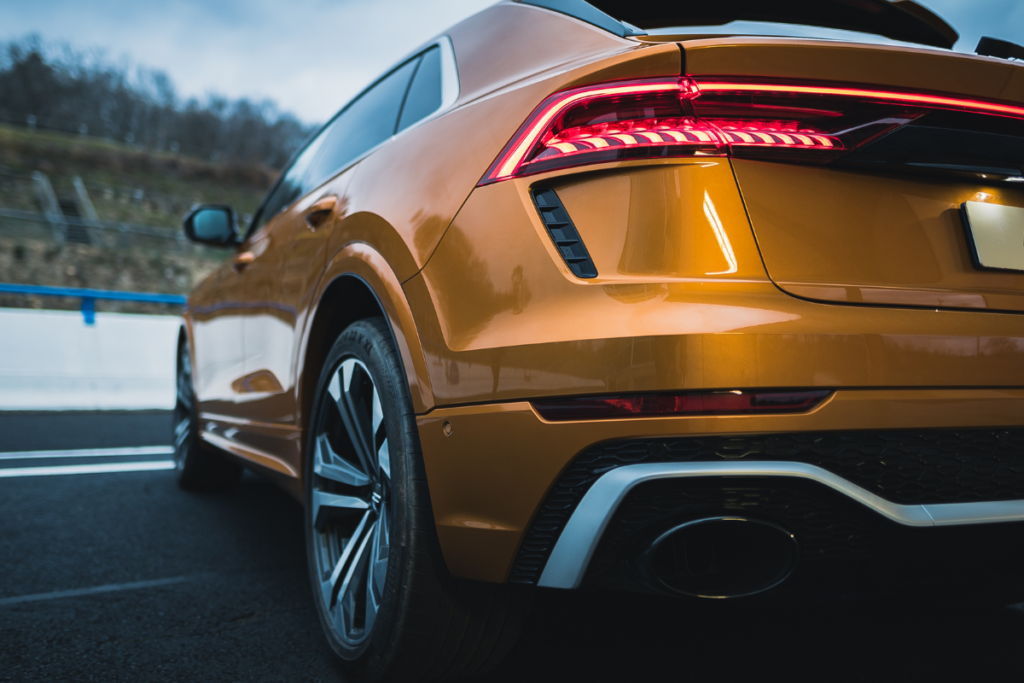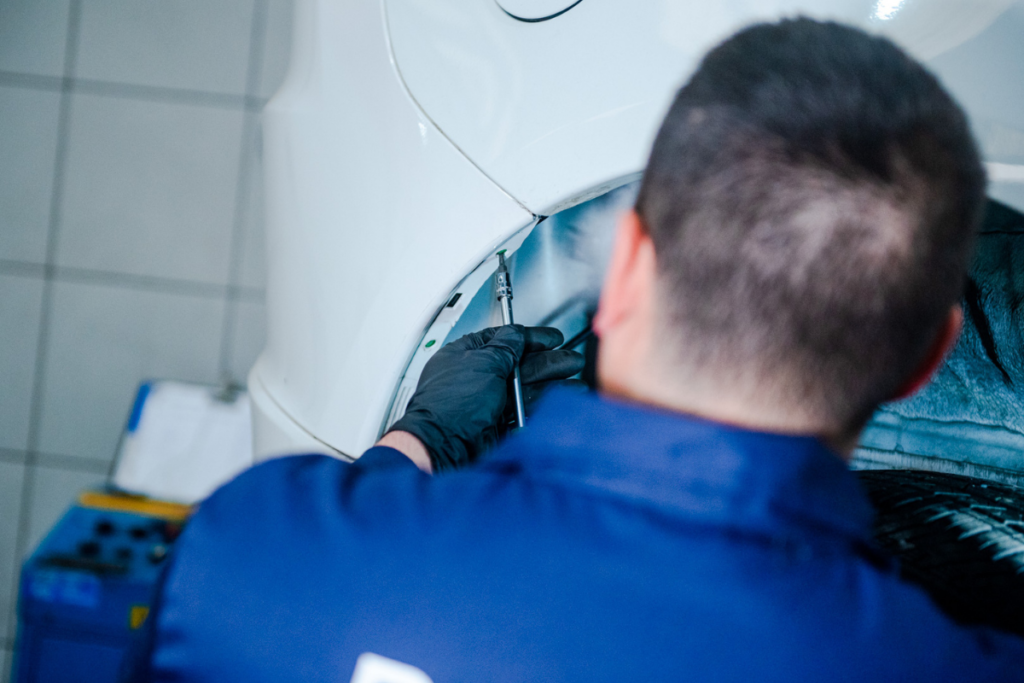At first glance, the bumper may seem like just another cosmetic element of your car. However, it plays a vital role in ensuring your vehicle's safety. Designed to absorb collision impacts, it safeguards both the passengers and the overall structure of the car. Without it, the force of a crash would directly affect the bodywork, leading to potentially severe damage.
This article aims to explore the various functions of the bumper, focusing on both the front and rear sections. Additionally, we’ll delve into the process of replacing a rear bumper, providing you with a clearer understanding of how it’s done. For further insights, consider reading "Why is car maintenance important?"
Take a look at the image below, showcasing an orange rear bumper on a sleek car. This color choice not only enhances the vehicle's appearance but also highlights the bumper's role in maintaining the car's integrity during minor impacts.

## What Are the Bumper’s Functions?
While the bumper does contribute to the car's aesthetic appeal, its primary purpose goes far beyond mere decoration. It forms a critical component of the car's safety system. The bumper is designed to absorb the energy of a collision, minimizing the impact on the vehicle and its occupants. This makes it the first line of defense in an accident, providing crucial protection in low-speed crashes.
Moreover, the bumper serves as an initial buffer, allowing the airbags enough time to deploy effectively, thereby enhancing passenger safety. It also plays a significant role in pedestrian safety, particularly the front bumper, which is shaped to reduce injury risks during potential collisions.
For sports cars, the front bumper's aerodynamic design aids in improving fuel efficiency by reducing air resistance. This is just one of the many ways the bumper contributes to the car's performance and safety.

## How to Replace the Rear Bumper
The rear bumper is subjected to considerable wear and tear, making it one of the most frequently repaired parts of a car. In the past, bumpers were made of rigid metal, posing a danger to pedestrians and other vehicles in the event of a collision. Furthermore, once damaged, they were nearly impossible to fix.
Today, modern bumpers are crafted from flexible plastics, offering improved safety and easier repair options. Depending on the extent of the damage, these bumpers can often be restored rather than replaced entirely.
If the bumper has minor scratches or dents, a quick repair job by a mechanic—or even at home using products like the WV40 multipurpose spray—can suffice. However, in cases of severe damage, such as cracks, it’s advisable to replace the bumper to ensure optimal safety and functionality.
Replacing a bumper might sound intimidating, but it’s surprisingly straightforward. Let’s walk through the steps for changing the rear bumper on a Volvo XC60 using just a screwdriver:
1. Open the trunk and unscrew the screws located at the top of the bumper.
2. Remove the inner protective padding from the rear wheels and unscrew the screws securing the bumper to the car body.
3. Carefully release the catches holding the bumper in place.
4. Start pulling the bumper from one side of the wheel and continue around the trunk area.
5. Detach the springs from their fittings.
6. Install the new bumper in the same position as the old one and push it gently into place, starting from one side of the wheel.
7. Tighten the bolts on the sides of the wheel.
8. Secure the screws on the top of the rear bumper.
9. Close the trunk and verify that the bumper is properly installed.
If you’d prefer a visual guide, check out our YouTube video tutorial for a step-by-step demonstration.
In situations where you’re unsure, it’s always best to consult a professional at a certified workshop.
Looking to upgrade or replace your car's rear bumper? Our website offers over 30,000 options for more than 60 different car brands. Your perfect fit is just a click away!
Dark red crystal, used in wood preservative, medicine, catalyst, pigment, oxidizer, glass coloring, fabric mordant manufacturing. Raw materials for making oxidation catalysts
Crystal Chromic Acid,High-End Plating Crystal Chromic Acid,Medicine Form Crystal Chromic Acid,Aqueous Chromic Acid
SICHUAN YINHE CHEMICAL CO.,LTD , https://www.sichuanyhcc.com